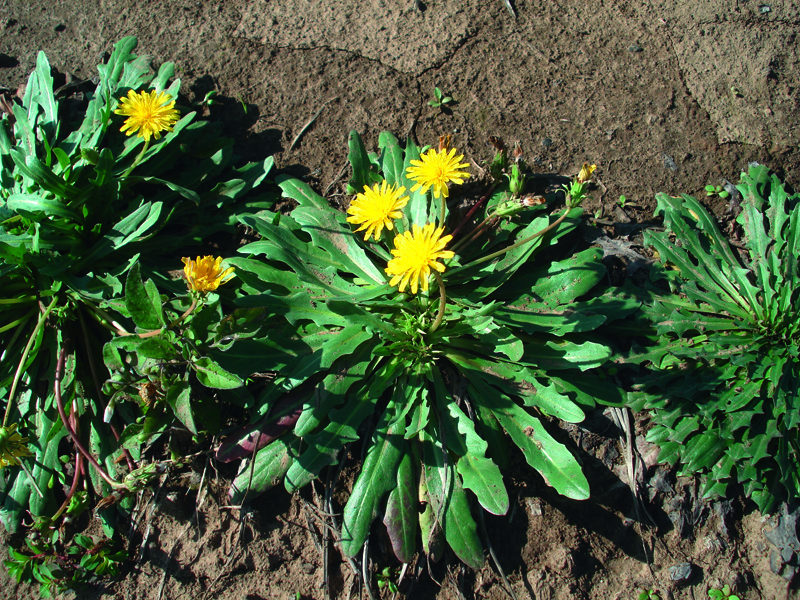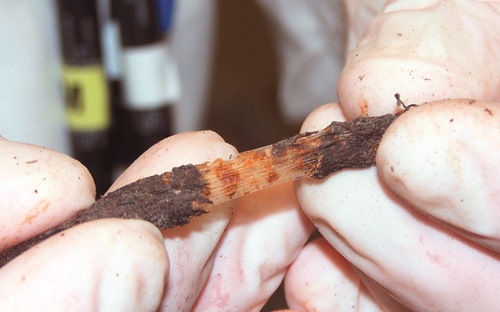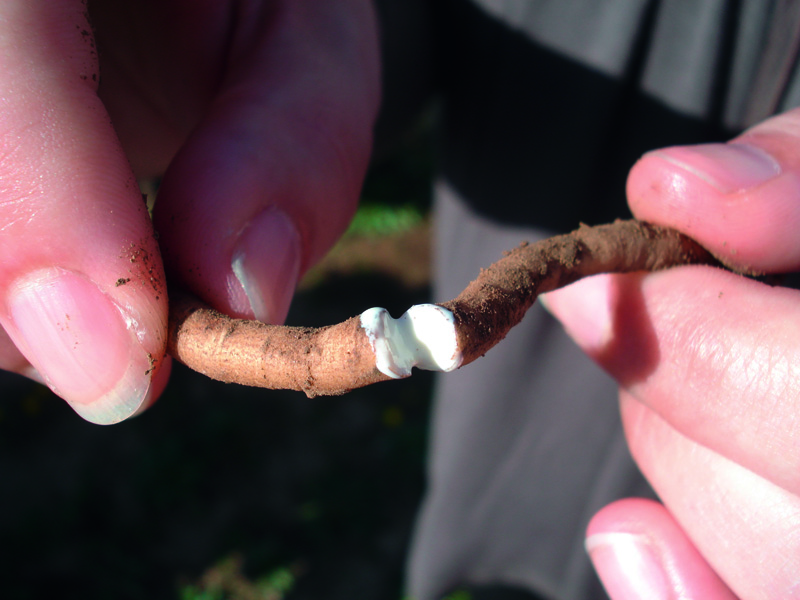Caoutchouc is a polymer that can be used in many ways, be it as a play ball in sports, gloves in the household, sealing rings at work or tires on cars. Due to the wide range of applications, the worldwide demand for synthetic and natural rubber is correspondingly high. Natural rubber cannot be replaced by synthetic alternatives because it has properties that cannot be simulated by petrochemically produced polymers.
Production of rubber, latex and inulin from dandelion roots
Natural rubber from Russian dandelion

Rubber has been identified in about 2500 plants, but only one is used commercially for production, Hevea brasiliensis, the rubber tree [1]. However, the stands of the tree are threatened by the South American leaf disease.
As an alternative, the Russian dandelion (Taraxacum koksaghyz) opened up the possibility of isolating the biopolymer from a natural resource in the northern hemisphere at the beginning of the 20th century.
Taraxacum koksaghyz is a robust plant that can also be cultivated on marginal soils. The cultivation of Russian dandelion thus contributes to a sustainable and ethically harmless resource. The average rubber content in Russian dandelion latex is less than 30 percent [1], the proportion of the dry root mass is about 5 - 10 percent according to own studies.
Extraction and production of latex at Fraunhofer IGB

Rubber can be isolated directly from the dandelion roots as a chewing-gum-like substance, but for the production of gloves rubber must be stabilized in its liquid form, the latex. Such products are obtained by dipping moulds in latex. To prevent premature coagulation of the rubber and to maintain its formability, the latex is mixed with stabilizing agents and antioxidants during extraction.

Fraunhofer IGB has already developed efficient extraction methods and identified various additives that can be used to prevent agglomeration, the preliminary stage for coagulation. The latex dispersions are to be stabilized in the long term by new combinations of proven agents. In addition, a latex with a rubber content similar to commercially available latices is also targeted.
Added value through extraction of inulin
The generation of an ecological and economic added value consists in the extraction of the sugar inulin, which is also contained in the dandelion roots. Inulin is an oligo- or polysaccharide which is used in the food industry as a substitute for sugar and fat as well as a soluble dietary fibre. In the pharmaceutical industry it is relevant as a carrier and stabilizer [2].
The optimal conditions for extraction have already been identified in cooperation with the IGVP of the University of Stuttgart. The necessary process parameters were also determined for upscaling the extraction. A scale-up of the extraction was carried out at the Fraunhofer CBP; larger amounts of inulin could already be produced in this way.
Inulin with a low molecular weight or the monosaccharide fructose can in future also be converted in fermentative processes with microorganisms and is used for the production of biobased basic molecules and valuable substances. High molecular weight inulin can be used in food.
Range of services
We have extensive expertise in extraction, analysis and reprocessing. As a result, we can offer the following portfolio to interested companies or research institutions:
- Isolation of natural substances and optimization of extraction conditions
- Preparation of raw solutions and dispersions
- Polysaccharide analysis for solutions and solids
- Conduct of fermentations on the basis of raw extracts
- Planning and execution of scale-up of extractions and fermentations in cooperation with Fraunhofer CBP in Leuna
Literature
[1] van Beillen, J.B. and Y. Poirier, Guayule and Russian dandelion as alternative sources of natural rubber. Critical Reviews in Biotechnology, 2007. 27(4): p. 217-231.
[2] Barclay, T., et al., Inulin - a versatile polysaccharide with multiple pharmaceutical and food chemical uses. Journal of Excipients and Food Chemistry, 2010. 1(3): p. 27-50.
 Fraunhofer Institute for Interfacial Engineering and Biotechnology IGB
Fraunhofer Institute for Interfacial Engineering and Biotechnology IGB